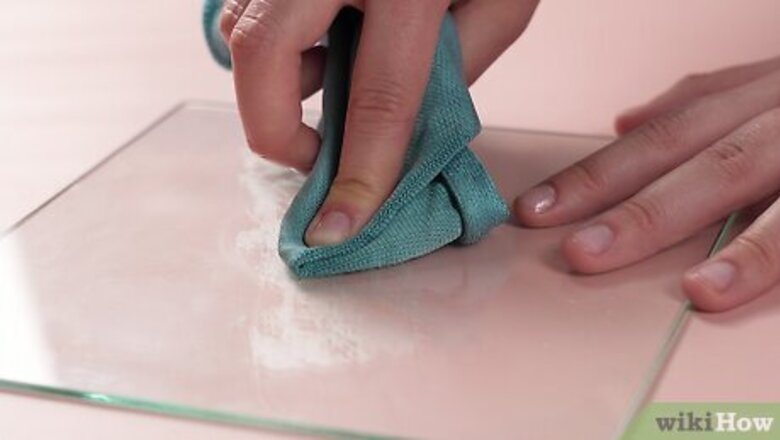
views
Rubbing alcohol
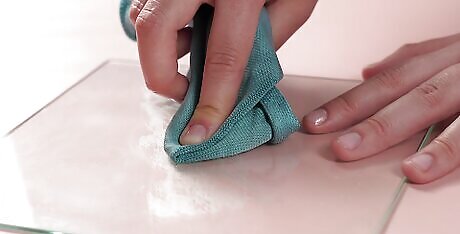
Soak a microfiber cloth in rubbing alcohol to rub the adhesive off. Use a soft, clean cloth to avoid damaging the surface you're treating. Dampen the cloth with isopropyl rubbing alcohol and gently rub it back and forth over the affected area. Always test an indiscriminate area before proceeding. Best for: Non-porous surfaces, like stone, leather, chrome, and carpet. Alternatively, use acetone or non-acetone nail polish remover. However, acetone may strip the paint off of metal surfaces. As a substitute for rubbing alcohol, use hard, clear liquor like vodka.
Dish soap and warm water
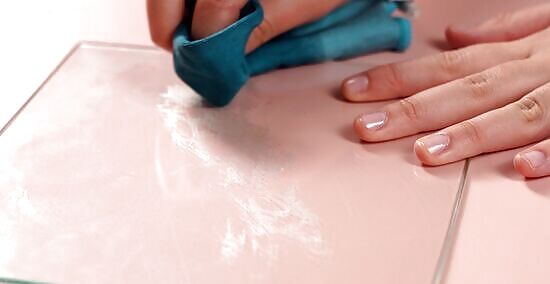
Scrub duct tape residue with dish soap and warm water. Place 1 US tbsp (3.0 tsp) of liquid dish detergent in 2 c (16 fl oz) of warm water. Stir until the mixture is bubbly. Then, dip a soft cloth into the soapy water to gently scrub the sticky residue. Keep rubbing the area until it no longer feels slippery or sticky. Best for: Any surface. If you're removing residue from a light-colored fabric surface, opt for dye-free dish soap to avoid staining the fabric.
Laundry detergent
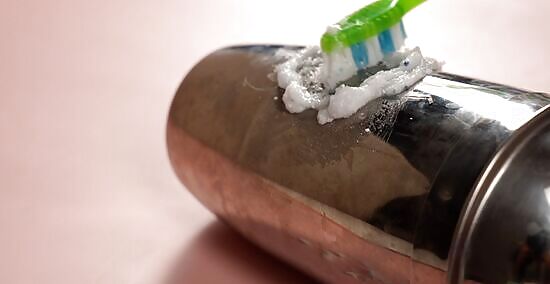
Use a 1:1 ratio of detergent and washing soda. Combine equal parts of laundry detergent and washing soda into a bowl. Add small amounts of water, adding more as needed, to form a paste. Apply with a soft-bristle toothbrush or cloth. Let it soak for 10 minutes before using a damp cloth to remove it. Best for: Stone, fabric, metal, vinyl, and more. Use warm water and a clean cloth to wipe the surface afterward. Washing soda is also known as soda ash or sodium carbonate. It is a natural cleaner and water softener that converts fats and grease into water-soluble salts. Make washing soda at home by putting a tray of baking soda in the oven at 400°F (204°C) for 15 minutes.
Cooking oil
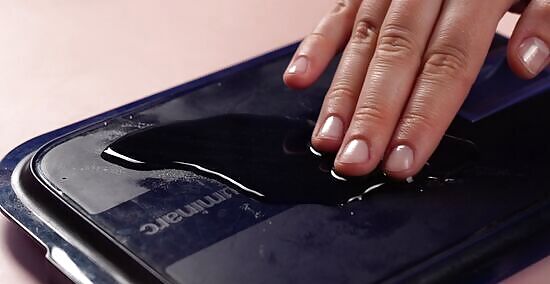
Cover the residue with cooking oil and wipe the surface after 5 minutes. Use any cooking oil you have on hand—vegetable, canola, olive oil, it doesn't matter! Once it soaks in, rub or scrape the residue with a soft-bristle brush, dull knife, or a gloved finger. Wipe any excess oil off with an all-purpose cleaner. Best for: Non-porous surfaces like glass, plastic, or metal. Applying oil to absorbent materials such as carpets or clothing may cause stains.
White vinegar
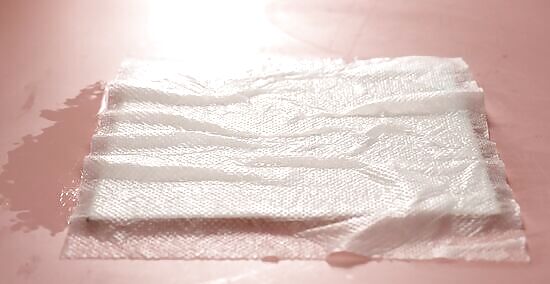
Soak a paper towel in white vinegar and lay it over the adhesive. Dab a paper towel or cloth into distilled white vinegar. Lay the paper towel over the residue, then lift it after a few minutes. Rub or scrape the loosened residue. Best for: Glass, tile, chrome, and fabric. Avoid using vinegar on stone, steel, and iron surfaces.
Baking soda
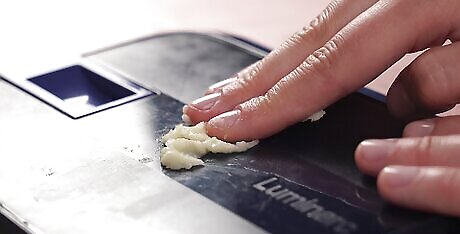
Mix equal parts baking soda and oil to make a paste. If duct tape has left a stubborn mess on your surface, you may need something with a little more grit. Make a paste of equal parts baking soda and cooking oil or water. Let the paste sit for 5 or more minutes before wiping it away. Best for: Fabric, metal, marble, silver, and plastic. Baking soda is ideal for kitchen surfaces since it's non-toxic. Avoid using baking soda on aluminum, gold-plated, marble, or antique silver pieces or surfaces since it's abrasive. It may scratch or oxidize certain surfaces.
WD-40

Spray WD-40 to treat metal surfaces. Spray the solution directly onto areas with a lot of residue or dampen a terry cloth to treat smaller patches of residue. Leave it on for a minute—longer if the residue is really stubborn—then scrub it off with soap and water to remove the oils. WD-40 is perfect for car surfaces, too. Some users say it can help remove minor scratches on a car's paint job. Read the warnings on the canister to avoid using it on surfaces that may stain. Best for: Metal and painted surfaces. As a substitute to WD-40, use Vaseline or car wax.
Lighter fluid
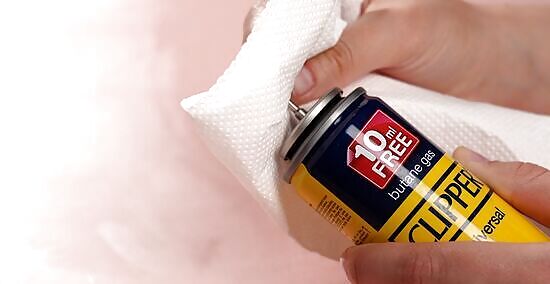
Scrub sticky residue with lighter fluid for non-porous surfaces. Apply a small amount of lighter fluid to a paper towel. Lightly scrub the adhesive until it lifts. If there's a blurry residue left, take an alcohol wipe (or rubbing alcohol) to clean the surface. Best for: Stainless steel, plastic, and most surfaces. Lighter fluid may affect some paint surfaces or certain plastics. Perform a test patch on beforehand.
Hair dryer
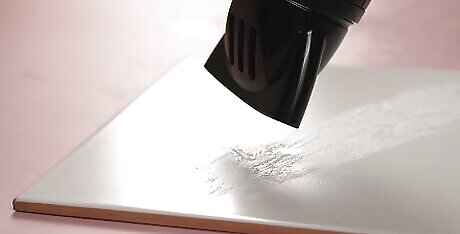
Heat the residue with a hairdryer for quick removal. Set the hairdryer to the highest setting. Aim a few inches from the surface to avoid scorching or damaging it. Turn it on, and allow the hot hair to loosen the adhesive. Scrape it off carefully with a knife or a similar tool. You may need to repeat this step multiple times. Best for: Most hard surfaces that can withstand heat. Use extra caution for plastic materials that may melt or glass surfaces that can crack due to high heat.
Dull blade
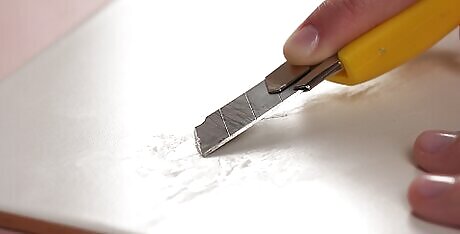
Scrape the residue with a butter knife, dull putty knife, or razor. Lay the blade flat against the surface to avoid scratches. Then, slowly slide the blade over the residue and chip away at it. Work in small sections. If needed, wipe the spot clean afterward with soapy water. Best for: Most surfaces.
Rubber eraser
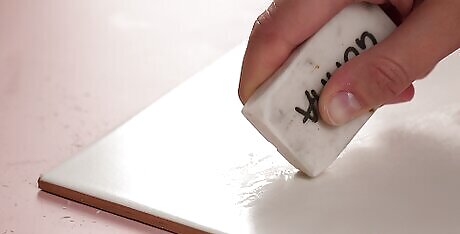
Lift the residue off most surfaces with a gum or rubber eraser. Take an eraser from your stationary supply and work in small sections to erase the residue. Brush the fibers away as you go. It may require a bit of elbow grease, but it'll work! Best for: Plastic, glass, metal, and most other surfaces. However, it may be more difficult to use with fabrics.
Duct tape
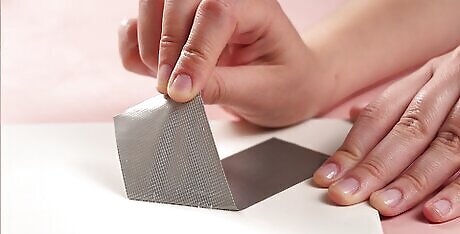
Use fresh duct tape to lift the old residue off. Have you ever tried to lift a dried Expo marker from a whiteboard using a fresh marker? Some users say the logic works the same when removing old sticky residue! Cut a fresh piece of duct tape. Place it over the residue and rip it off in the opposite direction to lift it. Best for: Most surfaces.
Commercial cleaners
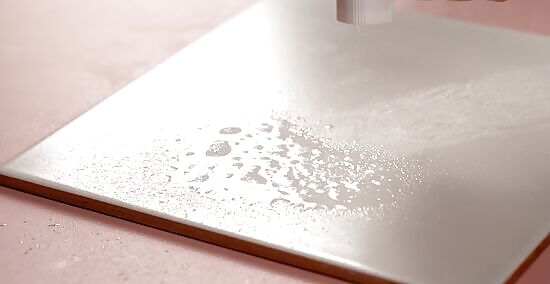
Apply a commercial residue remover for a stronger treatment. There are brands, like Goo-Gone, designed to remove residue from commercial tape. Follow the directions on the back label. Generally, this involves spraying the solution onto the surface, letting it sit, and wiping it away. Best for: Most non-fabric surfaces.
Power washing or sandblasting
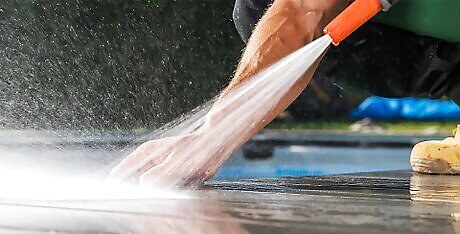
Use high water pressure or sandblasting for exterior surfaces. You may need something strong if you have sticky residue on rock, concrete, or brick surfaces. Aim a high-pressure water system or sandblaster at the adhesive. Briefly turn it on and off until the residue is gone. Best for: Rock, concrete, brick, and similar exterior surfaces. Be very careful when doing this. These machines can leave marks on most surfaces.












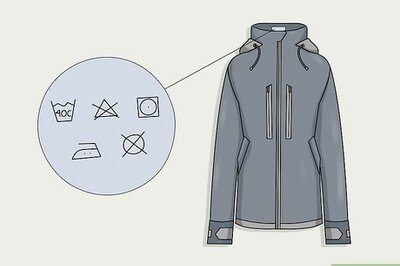





Comments
0 comment